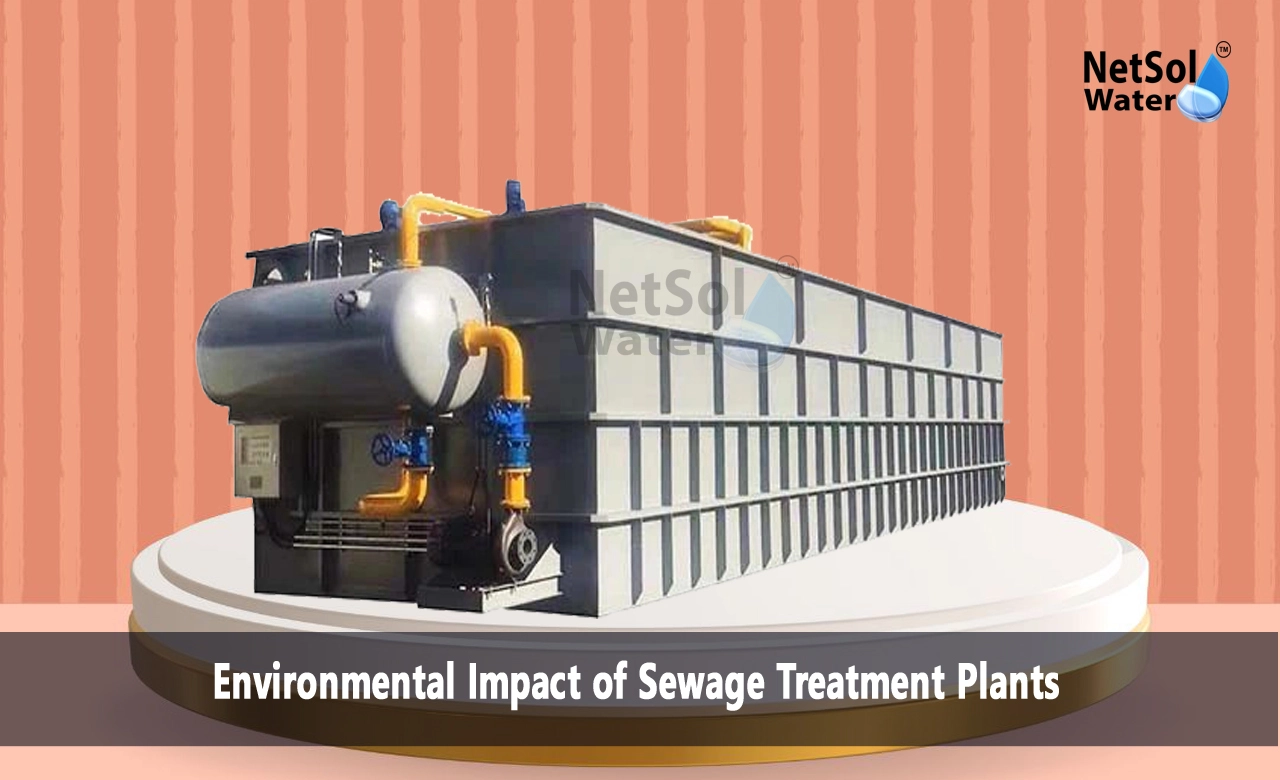What are the Environmental Impact of Sewage Treatment Plants?
Sewage treatment plants play an important function in modern life. They clean our effluent and preserve public health. But these facilities also have substantial effects on the environment. We will analyses the varied implications of sewage treatment plants on ecosystems, air quality and human populations. Let’s go into detail
Environmental impact of sewage treatment plants
Reduce Water Pollution
The major goal of sewage treatment plants is to reduce water contamination. They eliminate toxins from wastewater before releasing it back into the environment. However, the process isn't always perfect.
Nutrient Overload
Even treated wastewater often contains significant levels of nutrients like nitrogen and phosphorus. When released into aquatic bodies these nutrients can cause difficulties. They generate algal blooms which deplete oxygen in the water. This leads to dead zones where aquatic life cant exist. Many treatment plants struggle to remove all the nutrients from wastewater. Advanced treatment options exist yet they're pricey to adopt. As a result, sewage discharge remains a major source of nutrient pollution in many places.
Chemical Contaminants
Sewage treatment plants also confront issues with new contaminants. These include medications personal care goods and industrial chemicals. Many of these chemicals aren't totally eliminated via standard treatment techniques.Some pollutants can harm aquatic species even at low quantities. For example, certain medications impede fish reproductive. Others accumulate in the food chain impacting entire ecosystems.Treatment plants are researching novel methods to address these concerns. Activated carbon filtration and enhanced oxidation show potential. But widespread adoption will require time and significant money.
Pathogens
While sewage treatment dramatically reduces pathogen levels it doesn't eliminate them totally. Viruses and bacteria can still be present in cleaned wastewater. This poses threats to human health and wildlife notably in locations where wastewater is reused.UV disinfection and chlorination assist tackle this condition. But they come with their own environmental trade-offs. Chlorine byproducts can be hazardous to aquatic life. Finding the correct balance is a continuing issue for treatment plant operators.
Air Quality Impacts
Sewage treatment plants don't just effect water they also impact the air surrounding them.
Odor Issues
One of the most prominent impacts is odor. The decomposition of organic stuff in sewage produces foul-smelling fumes. These scents can be a considerable annoyance for adjacent populations.
Modern treatment plants utilize several strategies to control odors. Covers on treatment tanks and biofilters assist contain and treat foul air. But total eradication of scents is challenging especially for older buildings.
Greenhouse Gas Emissions
Sewage treatment techniques also generate greenhouse gasses. The breakdown of organic materials creates methane and carbon dioxide. These contribute to climate change.Many plants are attempting to lower their carbon footprint. Some trap methane to generate power. Others optimize their operations to minimize emissions. But the sector as a whole remains a large emitter of greenhouse gasses.
Volatile Organic Compounds
Treatment plants can discharge volatile organic compounds (VOCs) into the air. These chemicals arise from industrial wastewater and home items. VOCs contribute to smog generation and can impair human health.Controlling VOC emissions is tough. It demands close monitoring and sophisticated treatment approaches. Many plants are still attempting to solve this issue properly.
Land Use and Habitat Impacts
Sewage treatment plants require large land space. This can lead to habitat loss and fragmentation.
Wetland Destruction
Historically many treatment plants were built on marshes. These places were seen as barren and easy to develop. We now acknowledge the ecological value of wetlands. But the harm has already been done in many locations.Some facilities are working to restore wetlands or develop fake ones. These activities help minimize prior damage and provide extra wastewater treatment.
Energy Consumption
Sewage treatment is an energy-intensive procedure. This has both direct and indirect environmental implications.
Electricity Use
Treatment plants require enormous amounts of electricity to run pumps aerators and other equipment. This energy use contributes to air pollution and greenhouse gas emissions from power generation.
Many facilities are attempting to increase energy efficiency. They're updating to more efficient equipment and streamlining their operations. Some are also investing in on-site renewable energy generating.
Chemical Production
The treatment method relies on numerous chemicals. Producing and delivering these compounds has their own environmental imprint. It involves mining manufacturing and transportation all of which have implications.
Some plants are seeking options to reduce chemical use. Biological approaches and natural systems can aid in some circumstances. But chemical treatment remains important for many pollutants.
Positive Environmental Impacts
Despite the obstacles sewage treatment plants also have numerous positive benefits on the environment.
Water Conservation
Treated wastewater can be reused for irrigation industrial activities and even drinking water. This decreases pressure on freshwater resources. In water-scarce locations wastewater reuse is becoming increasingly significant.
Advanced treatment methods make it possible to manufacture high-quality recycled water. This helps conserve water resources and construct more resilient water supply.
Nutrient Recovery
Some innovative treatment plants are recovering nutrients from wastewater. Phosphorus in particular is a valuable resource. It's important for agriculture but worldwide supplies are diminishing.By removing phosphorus from sewage, treatment plants can minimize pollution and provide a useful commodity. This circular economy strategy turns waste into a resource.
Biosolids as Fertilizer
The solid material extracted after sewage treatment (biosolids) can be utilized as fertilizer. When correctly managed, biosolids provide nutrients for crops and improve soil health.
However, concerns regarding pollutants in biosolids persist. Careful monitoring and continued study are essential to assure its safe use.
Conclusion:
Sewage treatment plants have complex environmental implications. They play a critical role in protecting water quality and public health. But they also have tremendous obstacles in limiting their own environmental imprint.
Treatment plants are getting more efficient resource-conscious and linked with natural systems. The idea is to transform these facilities from essential burdens into valued assets for sustainable communities.
To explore customised commercial RO plants, Industrial RO plants, ETP or STP solutions for your needs in your areas and nearby regions, contact Netsol Water at:
Phone: +91-965-060-8473, Email: enquiry@netsolwater.com



